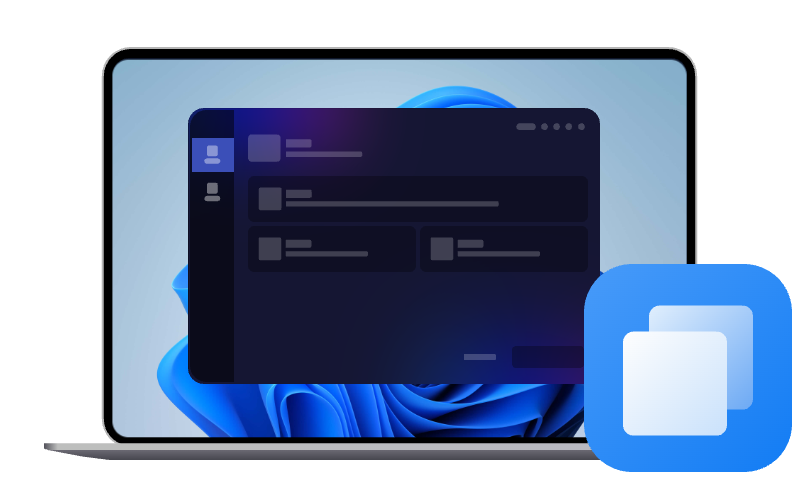How to Hot Clone a Windows Server [2012, 2016, 2019, etc]
This article describes how to hot clone Windows Server 2012, 2016, 2019, 2022, 2025, etc., effortlessly. Reliable cloning software is necessary.
Hot cloning creates an exact copy of your Windows Server while it's still running, with no downtime.This lets you upgrade hardware or migrate to a new machine without shutting it down. This guide provides a safe, step-by-step method to do it.
What is Hot Cloning? (And When You Absolutely Need It)
Hot cloningmeans creating an exact, bootable copy of your system drivewhile Windows Serverremains running and serving users. So, when is hot cloning necessary? But first, it's important to know about cold cloning and its key differences from hot cloning.
Hot Clone vs. Cold Clone: Key Differences
Hot clone and cold clone are cloning methods, but they are different in terms of system state, downtime, data consistency, and optimal scenarios. Please refer to the following table for further details.
|
Aspect |
Hot Clone |
Cold Clone |
|
SystemState |
remain online and operational |
completely powered down |
|
Downtime |
Zero downtime for users and services |
Require a maintenance window, causing service disruption |
|
Data Consistency |
Uses VSS to ensure a consistent point-in-time copy |
Guarantees consistency as no data is changing |
|
👍Best For |
Mission-critical servers that cannot be taken offline |
Non-critical systems, scheduled hardware maintenance, or simplified Windows Server environments |
The Bottom Line: Hot Clone is for zero-downtime migrations of live servers. Cold cloning, with its simplicity and absolute data consistency, is suitable for scenarios where downtime is acceptable.
Top Scenarios for Windows Server Hot Clone
Hot cloning isn't an everyday task, but it's invaluable in these specific situations:
- Hardware Upgrades: Seamlessly migrate the entire system from an old, slow HDD to a new, faster SSD, even NVMe, or transfer OS from server to server, all without disrupting service.
- Proactive Disaster Recovery: Create ready-to-go exact copies of servers. If the primary server fails, you can immediately boot from the cloned drive.
- Setting Up a Test/Staging Environment: Create exact replicas of your running servers to establish testing platforms for updates, new software, or configurations, while ensuring zero risk.
Best Practices for a Flawless Hot Clone
- Check for disk errors on the source drive.
- Check the physical connection of the new drive and be sure it’s recognized.
- Verify the target drive is larger than the used space of the original drive.
- Create a full Windows Server backup image before starting.
- Schedule wisely - Even though it's a hot clone, perform it during off-peak hours to minimize effects on performance.
- Use VSS-supported server cloning software (e.g., AOMEI Cloner) for live systems.

- 3 Cloning Solutions: System Clone, Disk Clone, Partition Clone.
- Hot Clone (zero downtime migration): Clone Windows Server 2008, 2012, 2016, 2019, 2022, 2025, etc., without reboot.
- Intelligent Clone: Clone only used sectors, skipping empty and bad sectors for faster, smoother cloning.
- SSD Alignment: Optimize SSD drives performance and longevity.
- Hardware Compatibility: Support different disk types, e.g., HDDs/SSDs, MBR/GPT, SATA/M.2/NVMe/PCIe, etc., regardless of capacity (larger or smaller) and partitioning style.
How to Hot Clone a Windows Server [Zero-Downtime Migration]
To clone a Windows Server without reboot, it’s necessary to have a VSS-supported server cloning software, such as AOMEI Cloner. Let's get started.
#1: Clone Hard Drive in Windows Server without Reboot
Step 1. Physically install the new drive or connect it using a USB adapter. Then, initialize the disk in Disk Management (if new).
Step 2. Open AOMEI Cloner after installing, and click Clone > Disk Clone.
Step 3. Then, select the live system drive and new drive, respectively. Click Next after each selection.
Warning: The destination drive will be overwritten or deleted. Make sure to select the right disk and backup your important data (if there is) in advance. Then, click OK to continue.
Step 4 (IMPORTANT). Review cloning options and set it up if needed.
- Notes:✎...
- Edit Partitions: It will auto-resize the new SSD to full capacity (if it’s larger). You can click Edit Partitions to confirm this and, optionally, convert MBR to GPT, or GPT to MBR.
- SSD Alignment: It’s suggested to enable SSD Alignment for best performance.
- Sector by Sector Clone: It’s a cloning mode that can clone all sectors of a drive, and takes longer.
Step 5. Confirm and click Start Clone to clone a Windows Server. It will enable VSS to create a consistent point-in-time, bootable copy.
#2: Hot Clone C Drive in Windows Server
Step 1. Connect the new hard drive to your computer first. Then, in AOMEI Cloner, click Clone > System Clone.
Step 2. Select the new, larger drive as the target drive. The OS and boot-related partitions are included automatically.
Step 3. The Make full use of disk space option is checked by default to optimize the capacity of a larger drive. Be sure to check SSD Alignment for best performance (if it’s an SSD) and click Start Clone to hot clone a Windows Server.
How to Make the New Drive Bootable After Cloning
#1: Physical Swap the Two Drives
Step 1. Shut down the server completely and disconnect the power.
Step 2. Remove the back cover. Then, locate the original drive, unscrew the screws, and carefully remove it.
Step 3. Then, install the new drive in its place and reassemble the device. You can choose to connect the old drive as storage.
#2: Configure BIOS/UEFI and First Boot
Step 1. Restart your computer and press the appropriate key (typically F2, Del, F10, F12, etc) during startup to access the BIOS/UEFI settings window.
Step 2. Go to the Boot tab and set the new drive as the first boot device.
Step 3. Press F10 to save changes and reboot. It will navigate you to the Windows desktop just as booting from the old drive.
Once booted from the new drive, check for and install any necessary hardware-specific drivers.
Conclusion
Hot clone Windows Server enables zero-downtime migration, allowing you to upgrade hard drives or operating systems without interrupting services. You can continue using the server normally during the cloning process.
Reliable cloning software like AOMEI Cloner is essential as it can migrate all data from one hard drive to another, including the OS, installed programs, system settings, your data, etc. Just download it to have a try if you can’t afford downtime.

